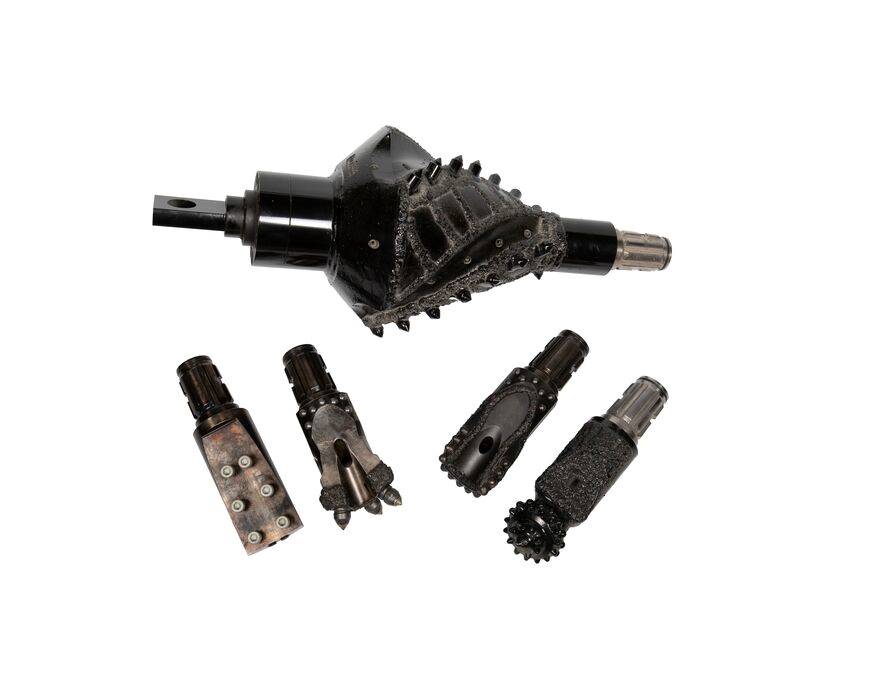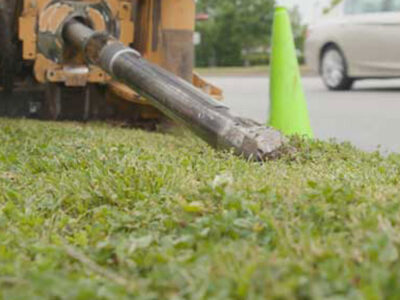If you’ve ever been confused about the difference between starter rods and lead rods in horizontal directional drilling (HDD), you’re not alone. These two components may seem similar at first glance, but they serve different purposes and are used in different scenarios. Advanced HDD tooling systems like the Vermeer Ultra X3 drilling system are changing how these components are used in the field.
Starter rod
Used primarily on utility-size HDDs, starter rods offer an efficient way to change out drilling tools. Key characteristics include:
- Torqueless connection: Allows contractors to remove drill heads or reamers in the exit pit without using breakout tongs.
- Multiple components: Multiple components: Requires several parts to create the torqueless connection, which depending on the model/manufacturer may include bolts, pins and/or collars.
- Regular maintenance: Needs consistent upkeep — threads must be kept clean and lubricated, while components like bolts, pins and collars require regular replacement.
- Cost of ownership: Due to its multiple components and maintenance requirements, starter rods typically have a higher long-term cost than lead rod setups.
Lead rod
Lead rods, also called transition rods, are commonly used on larger HDDs or in conjunction with specific tooling systems. Their characteristics include:
- Simple design: A single piece of steel that connects directly between the drill rod and tooling.
- Direct connection: Requires torque for connections using breakout tongs or drill vises.
- Length flexibility: Often requested in longer lengths so operators can pull them into drill vises at the entry side.
The Vermeer Ultra X3 drilling system: A new approach
The Vermeer Ultra X3 system changes the traditional starter rod requirement by providing more flexibility. This system allows operators to use a simpler lead rod setup when reaming diameters are within the system’s capabilities while still maintaining the benefits of a torqueless connection but in a different location.
The Ultra X3 system isn’t a starter rod. It’s a complete drilling system. You can use it with a lead rod for most jobs, but you don’t have to. If you’re reaming a hole bigger than what the system handles, you can still connect your regular starter rod to the Ultra X3 just like you would with any other drill. You’ve got options depending on the job.
Key advantages of this approach include:
- Non-torqued spline connection: Quick tooling changes with two knock-out dowel pins eliminate the need for breakout tongs.
- Cost reduction: For many HDD crews, the Ultra X3 system can help reduce overall tooling costs by eliminating the need for starter rods and multiple replacement pieces.
- Reaming capability: The system can handle reaming diameters up to 12 in (30.5 cm) in most conditions directly from the transmitter housing.
- Simplified setup: Using a lead rod with the Ultra X3 system reduces the number of components from four or five pieces to one.
- Smaller exit pits: Operators can drill out into the exit pit and put a reamer directly on the front of the housing, eliminating the need to expose the entire drill head, whether you’re using a starter rod or lead rod with the Ultra X3 system.

Making the choice
Your choice for HDD tooling comes down to two main options:
- Traditional setup: Using either a standard starter rod setup or the Ultra X3 system with a starter rod, where the starter rod components provide the torqueless connection.
- Lead rod with Ultra X3: Using a lead rod with the Vermeer Ultra X3 drilling system, which moves the torqueless connection to the tooling end. Available for HDDs ranging from 10,000 lb to 40,000 lb (44.5 kN to 177.9 kN), this setup helps reduce maintenance needs and simplifies operations.
Understanding these options can help you make smarter decisions about your HDD setup.
Have questions about starter rods, lead rods, the Vermeer Ultra X3 drilling system or other HDD equipment? Contact your local Vermeer dealer for expert advice tailored to your specific needs.
Vermeer Corporation reserves the right to make changes in engineering, design and specifications; add improvements; or discontinue manufacturing at any time without notice or obligation. Equipment shown is for illustrative purposes only and may display optional accessories or components specific to their global region. Please contact your local Vermeer dealer for more information on machine specifications. Vermeer and the Vermeer logo are trademarks of Vermeer Manufacturing Company in the U.S. and/or other countries.
© 2025 Vermeer Corporation. All Rights Reserved.
